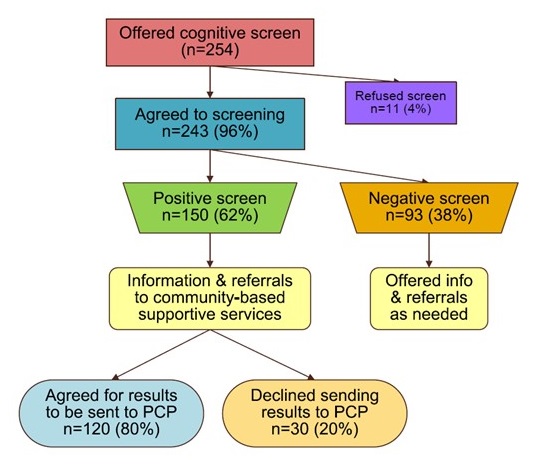ADVISORY COUNCIL ON ALZHEIMER'S RESEARCH, CARE, AND SERVICES
Monday, May 3, 2021
Printer Friendly Version in PDF Format (7 PDF pages)
Wisconsin’s Early Detection Engine
Kristen Felten, MSW, APSW
Dementia Specialist
Individual Reasons for Lack of Diagnosis
- Fear of stigma and shame associated with dementia
- Fear of loss of control or status
- Unable to recognize symptoms in self or others
- Unaware of available support or assistance
- Worry for future of dependent family members
Systemic Reasons for Lack of Diagnosis
- Barriers to accessing a provider geographically, physically, culturally, linguistically, and/or financially
- Limitations in health care systems
- Dearth of family practice providers skilled in making a dementia diagnosis and referring to community resources
- Inadequate reimbursement for time spent making a diagnosis
- Lack of effective medical treatments to stop disease progression
Wisconsin’s Early Detection Engine
- Memory screening in the community through county-based Aging and Disability Resource Centers (ADRCs) and tribes
- Wisconsin Alzheimer’s Institute memory diagnostic clinics network
Dementia Care Specialist Program
 |
Wisconsin’s Early Detection Engine
- Step 1: Dementia care specialists or dementia leads train front line staff how to screen.
- Step 2: Staff perform screens as a part of agency services.
- Step 3: ADRC staff offer to send results of people with positive screens directly to primary care providers.
- Step 4: ADRC staff obtain a release and send a cover letter to accompany the results.
- Step 5: Primary care provider provides evaluation based upon patient’s concerns.
- Step 6: Primary care provider makes appropriate diagnosis or takes further action.
- Step 7: Doctors and/or ADRC staff refer individuals diagnosed with dementia to community resources and supports.
Wisconsin Alzheimer's Institute Memory Clinics Network
- Receives referrals from the memory screening program to provide diagnostic evaluation
- Provides evaluation and diagnosis as appropriate
- Refers diagnosed patients back to the ADRC
Piloting the Program
- Funded by an Administration for Community Living (then AoA) grant, 2009-2011
- Implemented by the Portage County ADRC
- Utilized the Animal Naming and Mini-Cog screens
- Collected data from 243 screens
Pilot Results
 |
 |
Additional Individual Benefits
- Regular screening reduces stigma by normalizing dementia as a health condition.
- Early detection empowers decision-making.
- Information is provided to facilitate understanding of normal aging and symptoms of dementia.
- Options for support and assistance for the person and family are discussed.
Additional Systemic Benefits
- Increases accessibility at the local level and can be tailored to different communities
- Encourages more awareness of community resources by primary care clinicians
- Increases provider awareness of cognitive concerns among their patients
BOLD Grant Opportunity
- Add the MoCA tool certification to the Dementia Care Specialist Program.
- Update the Memory Screening in the Community training manual.
- Evaluate program impact with statewide expansion.
Files
Document
mtg40-slides4.pdf (pdf, 828.37 KB)
